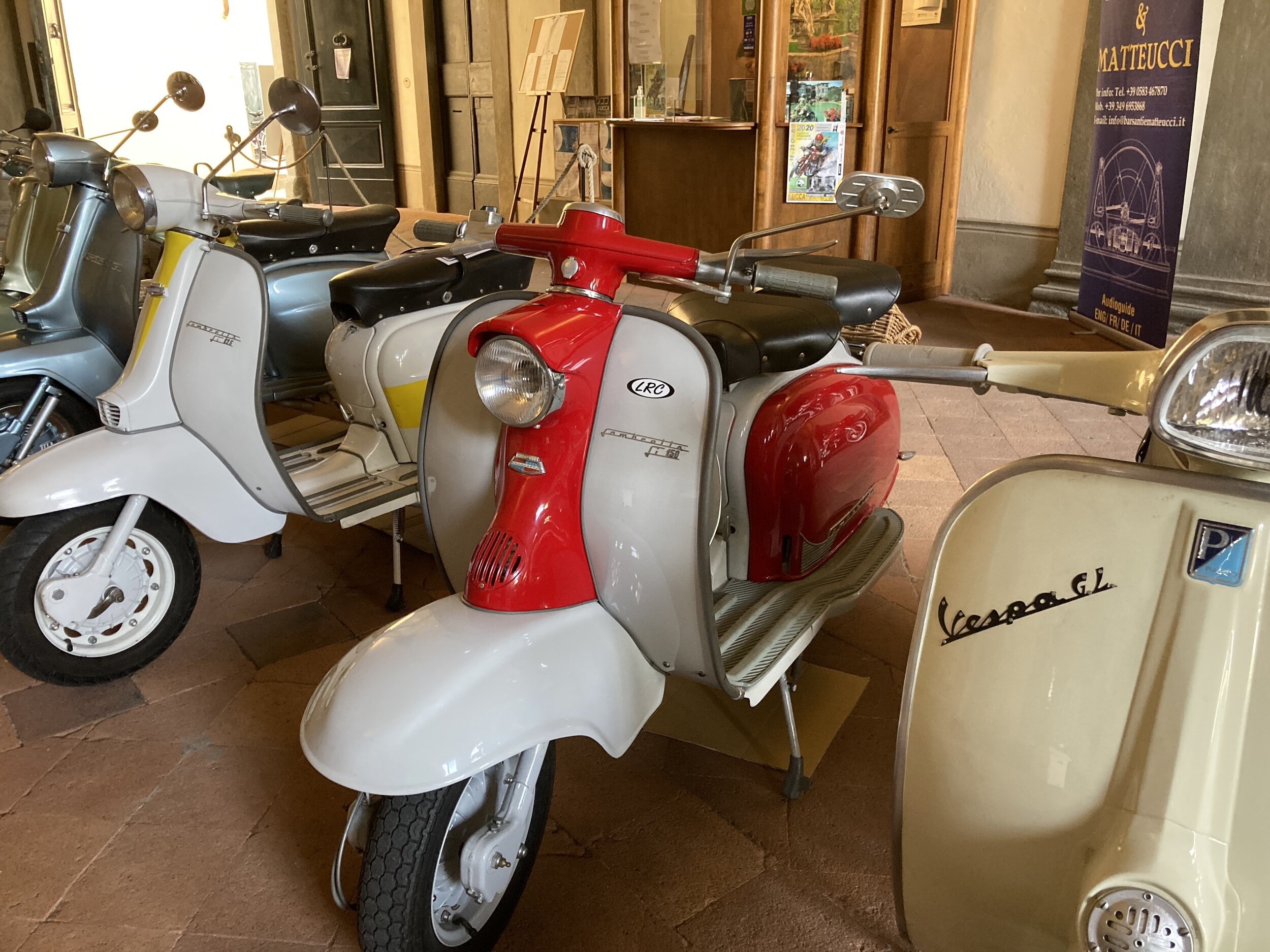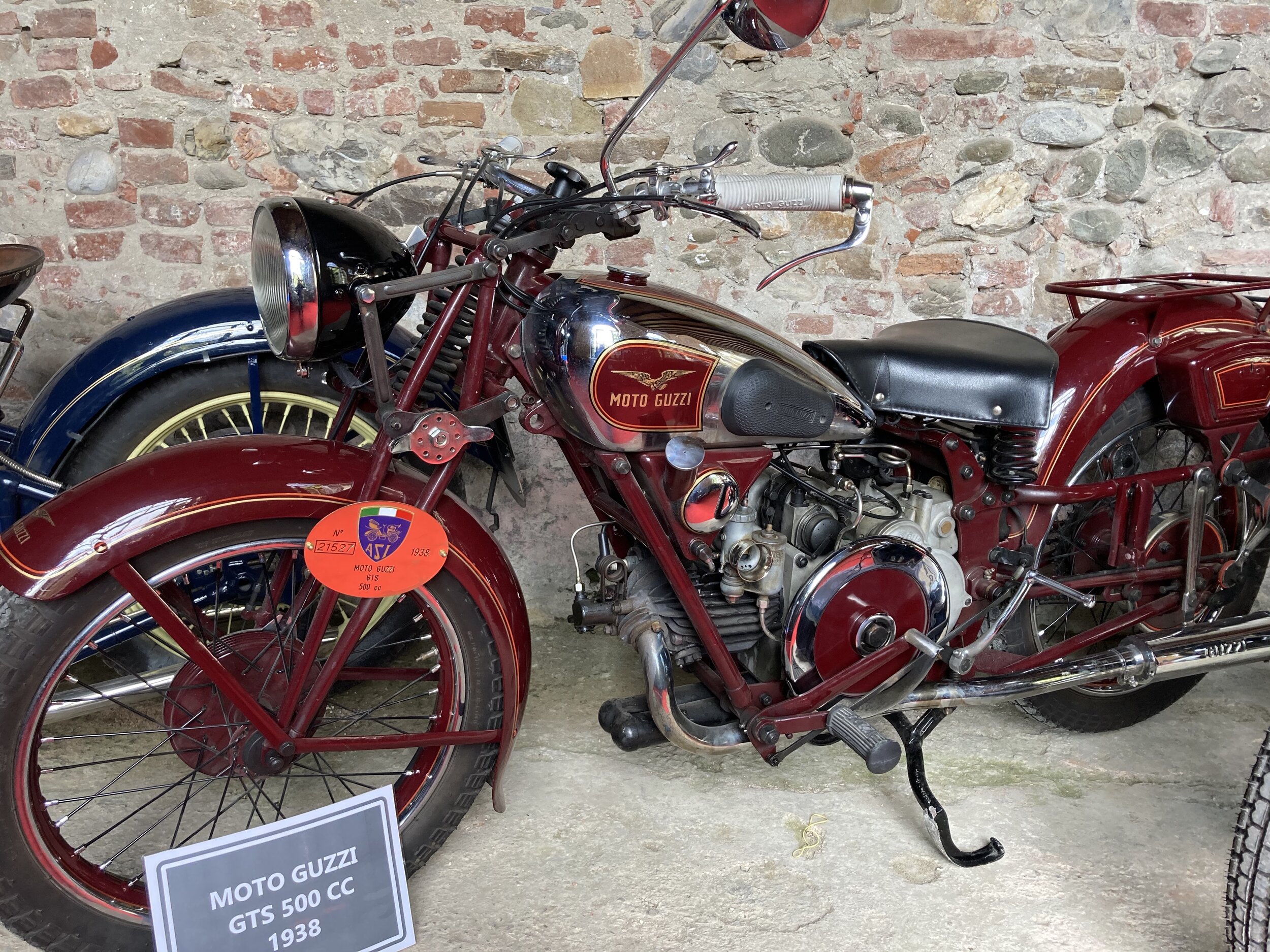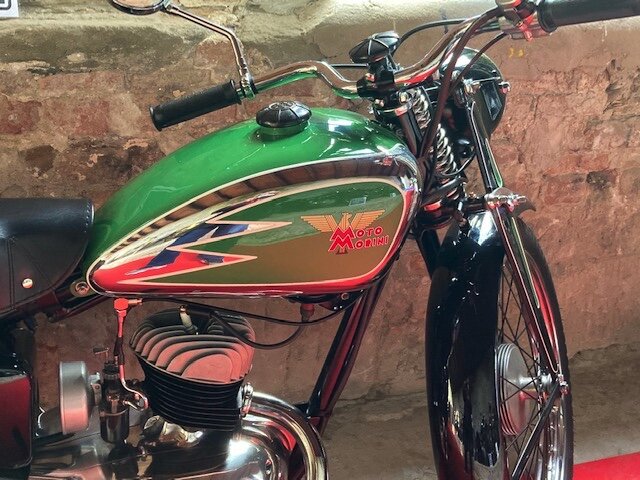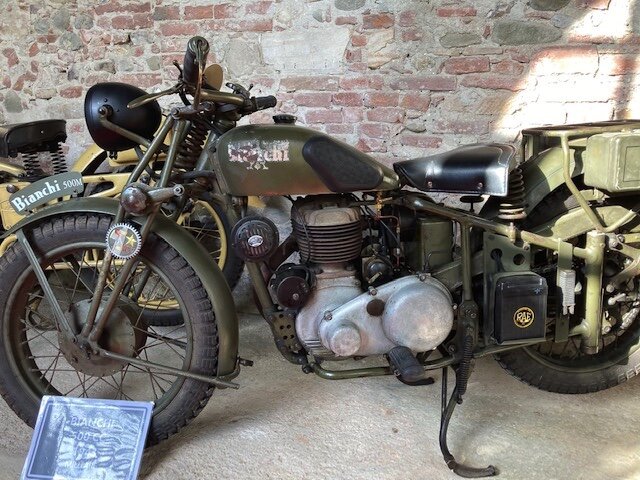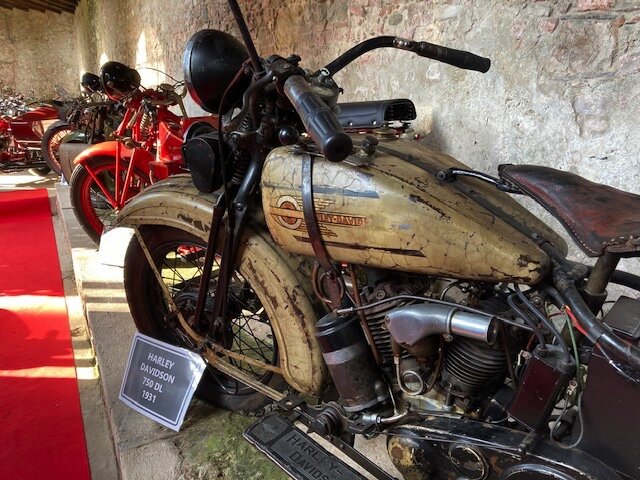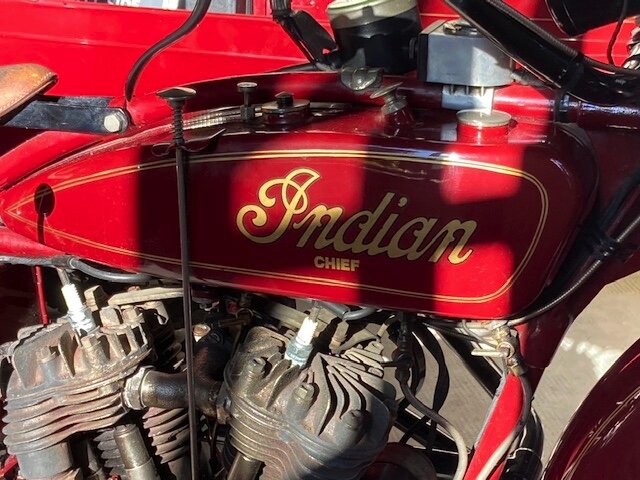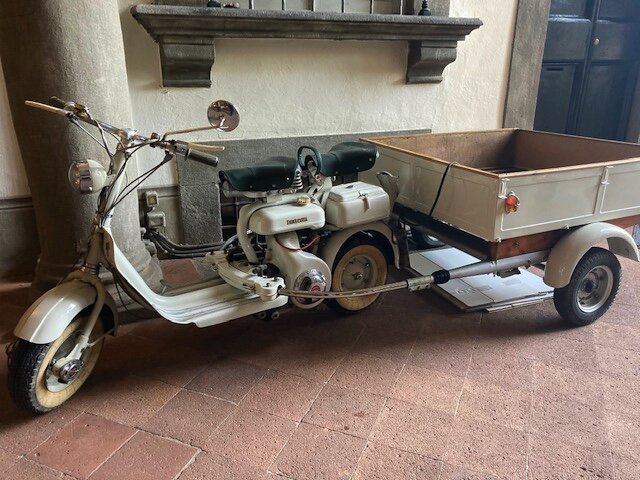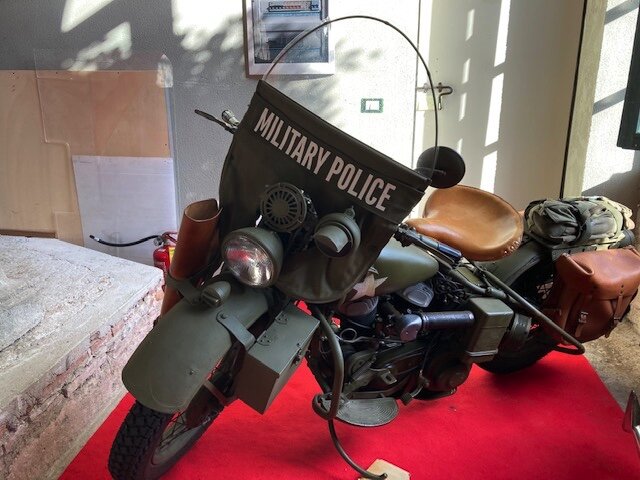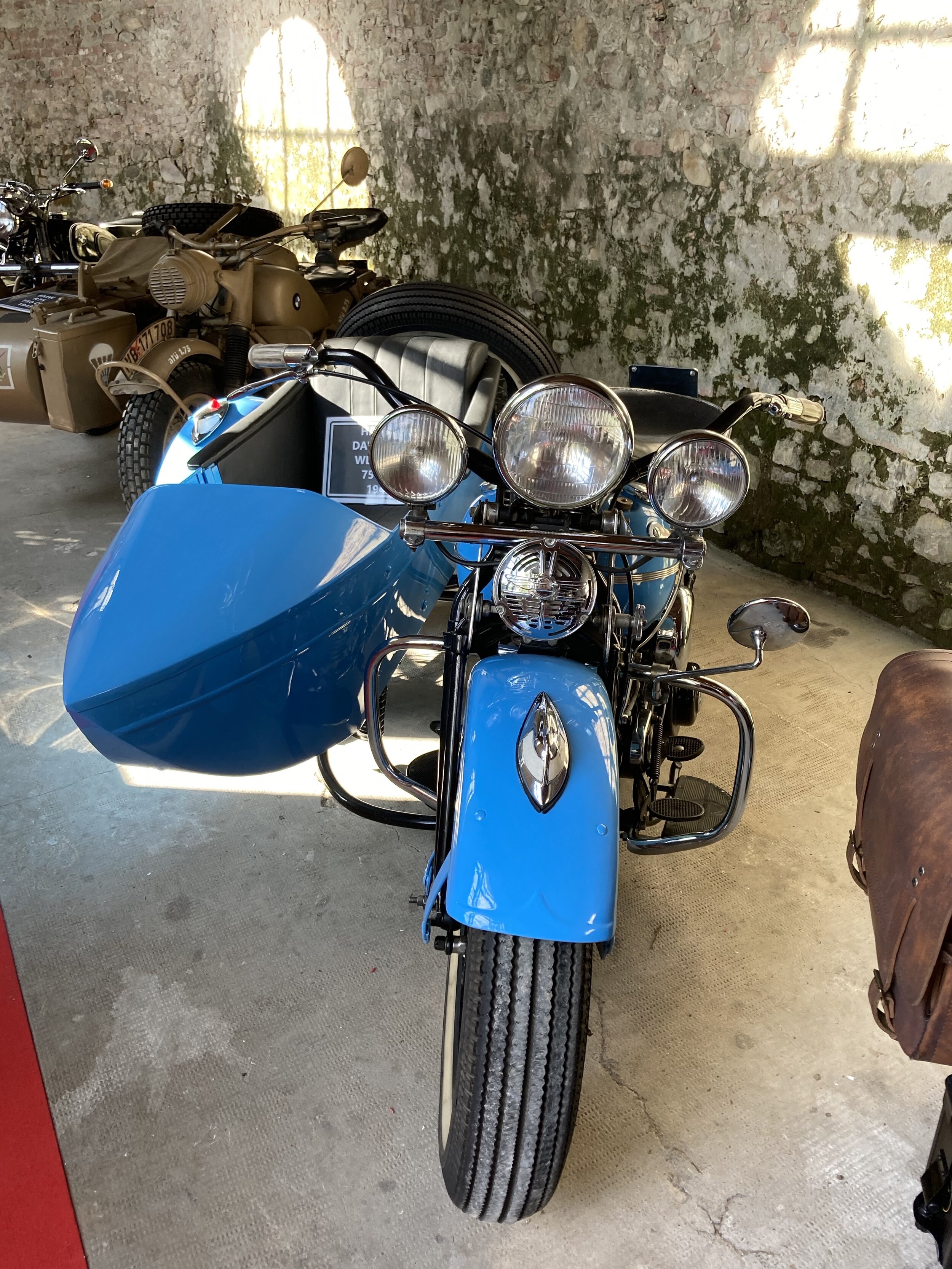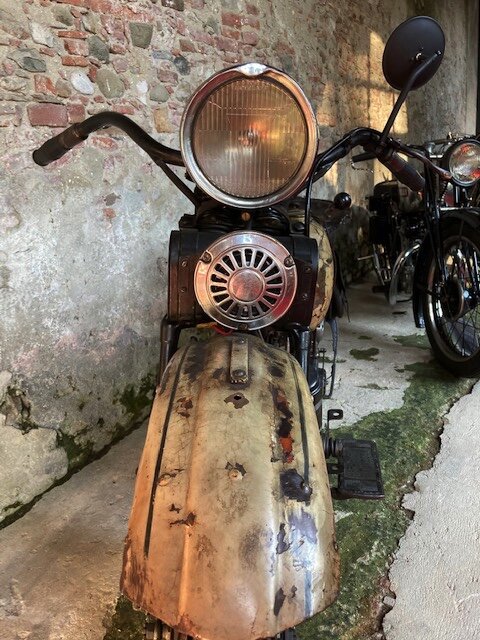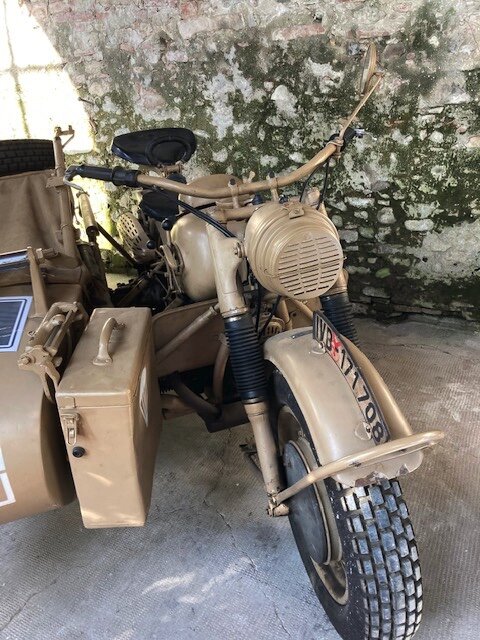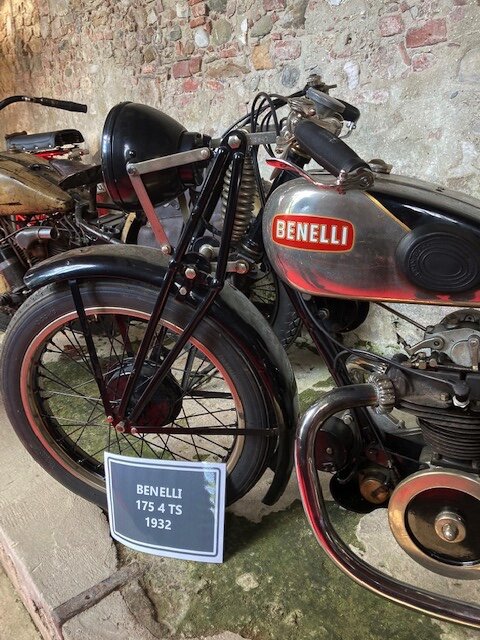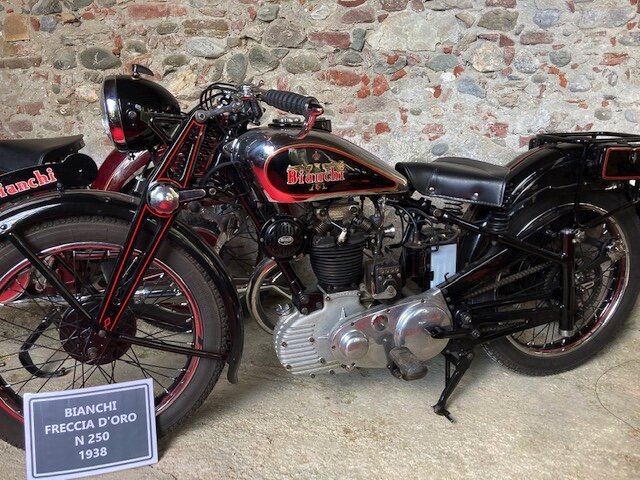Classic Italian Motorcycles
What is it about a vintage Italian motorcycle that is so alluring, so romantic?
I can just picture myself, a scarf around my hair Audrey Hepburn style, arms wrapped around someone who looks a lot like Marcello Mastroianni, speeding through the Italian countryside. Pure fantasy! In reality, my motorcycle days were back in the 70’s, the countryside was rural Colorado, my then “fidanzato”, while cute, was no Marcello, and the motorcycle was Japanese made. Back then, Italy hadn’t yet entered my dreams.
A week or so ago, while watching Italian TV (a strategy for increasing my Italian vocabulary), an interview with the mayor of Lucca caught my attention. He was talking about an exhibit of classic Italian motorcyles. Even better, he said that the exhibit was being held in the beautiful setting of Palazzo Pfanner, one of the loveliest spots inside the historic city center. This was something I had to see.
The motorcycles filled both the entry courtyard of the grand palazzo and the limonaia (the outbuilding where the lemon trees are stored in cold weather). What a stunning backdrop for the beautiful classic motorcycles!
Scooters filled the entry courtyard to the palazzo. These are by Vespa and Lambretta, both companies began manufacturing in the 1940’s.
If you’ve ever enjoyed a motorcycle ride, say a word of thanks to two inventors from the province of Lucca - Eugenio Barsanti and Felice Matteucci. They did not invent the motorcycle but they did develop and patent the first internal combustion engine (way back in 1853). This type of engine, based on harnessing the power of exploding gases (sounds a bit frightening), provided an alternative to the steam engine and was a precursor to the modern piston engine. The original models of Barsanti and Matteuci were far too large to use on a motorcycle; it would take German engineers to make the first “modern” motorcycle (the Daimler Reitwagen) in 1885. How things have evolved from those early models! And, since no one does style better than the Italians, the classic made-in-Italy models from the 1920’s through the 1960’s are not just means of transportation, they are stylish works of art.
Some of the names are recognizable - Ducati, Lambretta, and Moto Guzzi. Other older brands have been out of production for years and are less well known (at least to non-Italians). The exhibit included both the famous brands and the less famous. There were even some American classics like Henderson and Harley-Davidson and the first American motorcycle brand, the Indian.
Some of the motorcycles in the exhibit were very early models, some were war-time vehicles, some were designed for work, and some were clearly designed for fun and for speed. There was even a group with fancy side cars. All were fascinating, from the leather seats, to the spoke wheels, to the saddle bags and the somewhat primitive looking engine parts.
The oldest model in the exhibit was a Galloni, a brand produced only between 1920 and 1931. The one in the exhibit was from 1924. Moto Guzzi was represented with the largest number of bikes, but there were also models by Sertum, della Ferrara, Bianchi, and Benelli.
The exhibit was fascinating. It was visually interesting, it presented a different aspect of Italian culture and history, the setting was gorgeous, and I learned about Barsanti and Matteucci (and more than I ever thought I’d know about combustion engines). Now, if only I could take one for a spin around the Tuscan countryside!


